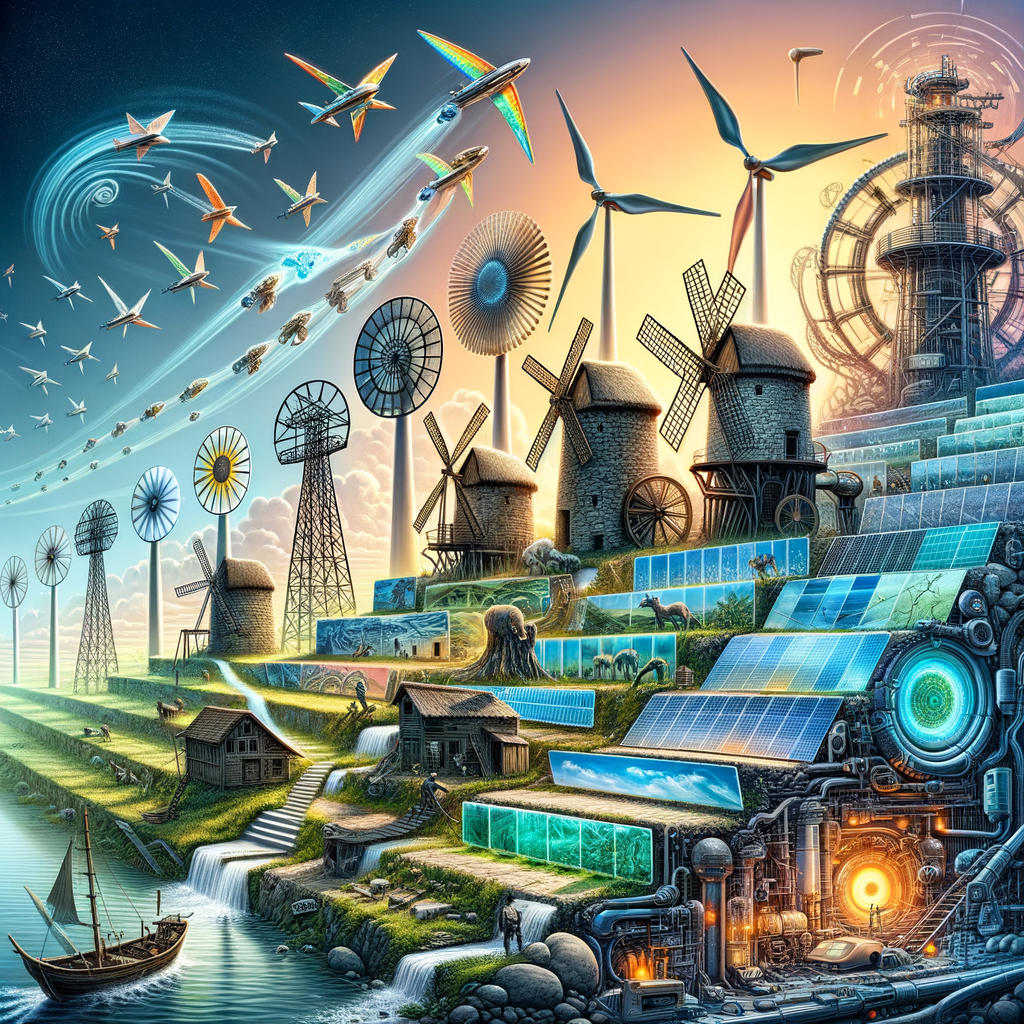Physical Address
304 North Cardinal St.
Dorchester Center, MA 02124
Physical Address
304 North Cardinal St.
Dorchester Center, MA 02124

In the last decade, renewable energy technologies have emerged as a key player in the global energy landscape. With increasing concerns over climate change and dwindling fossil fuel reserves, the focus has shifted towards sustainable and green energy sources. This article will delve into the evolution of renewable energy technologies and provide a glimpse into what the future holds.
Renewable energy’s journey started with simple windmills and waterwheels that were used for grinding grain or pumping water. The late 19th century saw the first use of solar power to heat water, marking a significant milestone in renewable energy development.
During the Industrial Revolution, fossil fuels like coal became dominant due to their high-energy output. However, this reliance on non-renewable resources led to environmental degradation, prompting scientists to seek alternatives.
In recent decades, advancements in technology have made it possible to harness renewable resources more efficiently. Wind turbines have evolved from simple structures to sophisticated machines capable of generating massive amounts of electricity. Solar panels have become more efficient at converting sunlight into power. Bioenergy has seen significant improvements through advanced biofuel production techniques.
Solar power has come a long way since its inception. Today’s photovoltaic cells are far more efficient than their predecessors, thanks to advances in materials science and engineering. Moreover, solar farms are becoming increasingly common worldwide as nations strive to reduce their carbon footprints.
Similarly, wind energy has undergone significant transformation over time. Modern wind turbines are engineered to maximise energy production, even in low-wind conditions. Offshore wind farms are also gaining popularity due to their potential for high-energy output.
Hydropower has been a reliable source of renewable energy for centuries. Today’s hydroelectric plants are highly efficient and have minimal environmental impact compared to traditional dams. On the other hand, bioenergy is making strides with developments in biomass and biofuel technologies.
As we look towards the future, it’s clear that renewable energy technologies will continue to play a pivotal role in our energy systems. Emerging trends such as smart grids, energy storage solutions, and advanced materials promise to revolutionise the way we generate and consume power.
Smart grids use digital technology to optimise the production and distribution of electricity, reducing losses and improving reliability. They can integrate large amounts of renewable energy into the grid, facilitating a smooth transition away from fossil fuels.
Energy storage solutions like batteries and pumped-storage hydroelectricity can store excess power generated by renewables for later use. These technologies are crucial for overcoming one of the biggest challenges facing renewables: intermittency.
New materials such as perovskites could significantly improve solar cell efficiency, while advances in turbine blade design could enhance wind energy production. The development of these materials is an exciting frontier in renewable energy research.
In conclusion, renewable energy technologies have evolved dramatically over time, thanks largely to advancements in science and engineering. As we move towards a more sustainable future, these technologies will undoubtedly continue to shape our world.